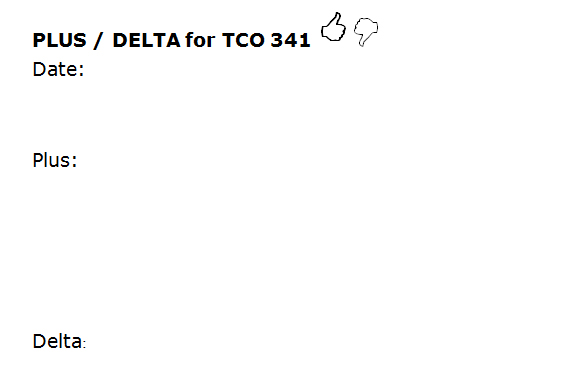Professors teach in a vacuum; we enter the classroom, deliver our lessons, and leave, and rarely get any feedback on the quality of our instruction before the end of the semester when formal faculty evaluations are completed by students. Other than grades on tests and other assessments, we really don’t know for sure if students are learning what we are teaching, and we often don’t have a good handle on whether our instruction is working.
This semester I have one student who thanks me every time he leaves class. I’m not sure of his motivation, but the impact of his words makes me feel that he values the class and what we do there. The other 19 students leave without saying a word, which I find frustrating. I want to know more about what they experience in class and if they too find it valuable.
Kember, Leung, & Kwan, writing in Assessment & Evaluation in Higher Education (2002) indicate that formal faculty questionnaires completed by students at the end of the semester are not always effective in improving faculty performance, for many different reasons. Part of this problem is that the evaluations occur after the fact, after the class is completed and the professor and students have gone their separate ways. Hesketh & Laidlaw, writing in Medical Teacher (2002), state that feedback is most effective when it is well-timed according to daily work and is as close to the event that it evaluates as possible.
That’s why I like to use something called a “plus/delta” evaluation. The plus/delta is a brief, half-page form that I hand out at the beginning of class. It was first developed by Dr. Marj Davis and Dr. Helen Grady at Mercer University. I ask students during class to think of a “plus” – something they like about our class, and a “delta” – something they’d like to change. When class is over, I ask them to leave their completed forms (with no name) by the door, and I collect them and read the anonymous answers. After being sure to tell the students to give me substantive feedback, and not to mention that the room is too cold or that they are hungry after lunch – things I cannot control – I usually get good, solid comments that I can use to improve my teaching.

I conducted a plus/delta in two of my classes recently, and learned that my students liked the PowerPoint presentations I was giving, but felt I wasn’t using the textbook enough. I also learned that they wanted more hands-on assignments so that they could apply what they were learning. This was immediate, timely feedback that enabled me to redirect my lesson planning to accommodate their interests.
It’s not a perfect solution, of course. Not everything the students write is valuable. Sometimes they write a plus but leave the delta blank. And sometimes they comment that everything is fine the way it is. Nevertheless, the plus/delta is a quick and easy way to receive valuable feedback from students on a regular basis. It takes very little class time, keeps the responses anonymous, and points me to small changes I can make to improve the class. This in turn makes the class experience more valuable for everyone!
Susan Codone, PhD is an associate professor of technical communication in the School of Engineering at Mercer University.





